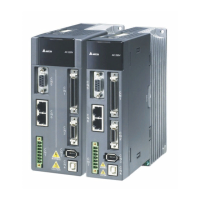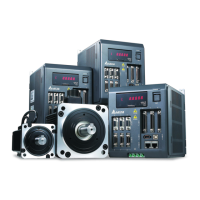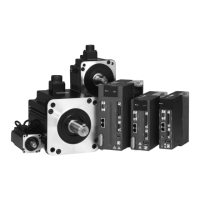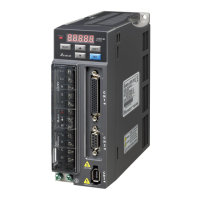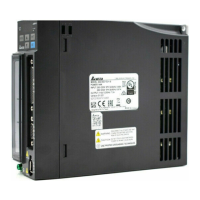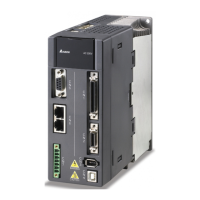ASDA Series Application Note Introduction of E-Cam Operation
March, 2015 2-29
Rotary Shear- Printer Machine
Here come the operational principles:
The relation between printing axis and material feeding axis is shown in Figure 2.42. Each
printing axis does not connect to ball-screw but operates individually. Due to the printing
length limit, it cannot do full printing. The printing axis operates at constant speed and toward
the same direction. When the printing plate reaches the paper (graph A), the speed of paper
and printing plate is the same and both are in the same direction (graph B). When printing is
complete, paper and printing plate separate (graph C). Then, paper decelerates to stop and
operate towards the opposite direction for a short distance (graph D). When it starts printing
again, paper operates at the same speed and same direction as the printing cylinder. So that
the printing plate always synchronizes with the paper when printing. If the printing axis and
paper separate, paper is retrieved. Both axes still synchronize with one another. With this
pattern, the adjacent printing pattern is closely arranged with one another and it therefore
saves the use of paper. This application is very common in intermittent printing machine.
A
Printing
axis
Material
feeding
axis
Material
feeding
axis
Printing plate
The rotating direction of
printing axis
Direction of the paper
The rotating direction of
material feeding direction
Printing
axis
Material
feeding
axis
Material
feeding
axis
D
B
Printing
axis
Material
feeding
axis
Material
feeding
axis
Printing
axis
Material
feeding
axis
Material
feeding
axis
C
Figure 2.42 Motion Analysis on Intermittent Printing
See Figure 2.43. ASDA-Soft provides servo setting wizard for intermittent motion control.
Users could plan it according to the required print area and blank area and manually adjust
the angle in synchronous area and waiting area. Complete the setting of material feeding
axis by following the steps below.
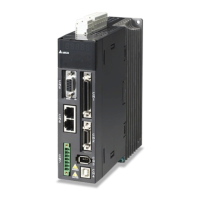
